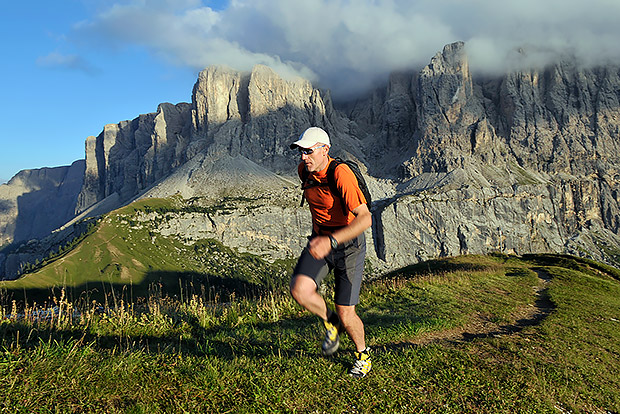
Outdoor exercise can boost motivation and burn extra calories, but it can be challenging with uneven terrain and unexpected weather conditions. These tips will help you prepare before taking your workout to the trail.
Pick the right path
Choose a trail distance that is appropriate for your fitness level. Keep in mind that running or walking on a trail can be more physically challenging than a similar workout on the road or treadmill. Do your research first, and take a map with you. Don't rely on cell coverage for navigation. If you accidentally set out on the 7-mile trail, meaning to take the 4-mile loop, you might end up with a harder, longer workout than you can handle.
Communicate
Ideally, you would hit the trails with a partner, but if you go alone, tell someone the details of your workout — where you will be, what trail you are using, and how many miles you plan to complete. Carry a form of ID and your cell phone. You never know how isolated the trail may be or when a minor injury will stop you in your tracks.
Practice wildlife safety
Educate yourself on general wildlife safety before heading out on a trail. Know what animals can be found in your area. Consider carrying bear spray if it is recommended. If it's hunting season, seek the advice of wildlife officers on what parks or trails to avoid.
Respect plants and the environment
Plants such as poison ivy and poison oak often line the edge of trails, and once the leaves come into contact with your skin, an itchy rash can develop. When running on narrow or overgrown trails, consider wearing tall socks that cover your lower legs. Stay in the center of the path to avoid stepping off marked areas.
Wear the right shoes
If you decide to include trail exercise in your regular workouts, invest in a pair of trail shoes that have thick soles and toe guards to protect your feet from the rough terrain. The tread on these shoes is also better designed to grip the ground, improving traction as you maneuver over rocky hills and around tight turns.
Prepare for weather changes
Keep in mind that weather conditions can change drastically. Dress in layers so that you are prepared for any change in weather. Generally speaking, the first layer should be thin and wick moisture, the second layer should provide insulation (e.g., a fleece), and the third layer should protect against wind and precipitation. Tie unused layers around your waist or stuff them in a small backpack.
Make smart water and snack choices
For longer workouts, carrying water and snacks is wise. Small hiking and running backpacks with a water bladder (e.g. Camelbaks), or waist belts that hold small water bottles are ideal. Trail mixes, energy bars, and dried fruit work well for lightweight, nutritious snacks. Depending on the wildlife in your area, you may need to store your food in an airtight container. Always pack more food and water than you think you'll need.



 5 Ways to Burn 300 Calories this Weekend
5 Ways to Burn 300 Calories this Weekend
 The Best Home and Garden Chores for Burning Calories
The Best Home and Garden Chores for Burning Calories
 5 Tips for Making Exercise a Habit
5 Tips for Making Exercise a Habit
 Best Ways to Stay Safe during Exercise in Hot Weather
Best Ways to Stay Safe during Exercise in Hot Weather
 11 Tips for Exercise Motivation
11 Tips for Exercise Motivation
 Signs You Need to Increase Exercise Intensity
Signs You Need to Increase Exercise Intensity
 Common Exercise Myths
Common Exercise Myths
 How to Gradually Increase Physical Activity
How to Gradually Increase Physical Activity

 Pinterest
Pinterest RSS Feed
RSS Feed